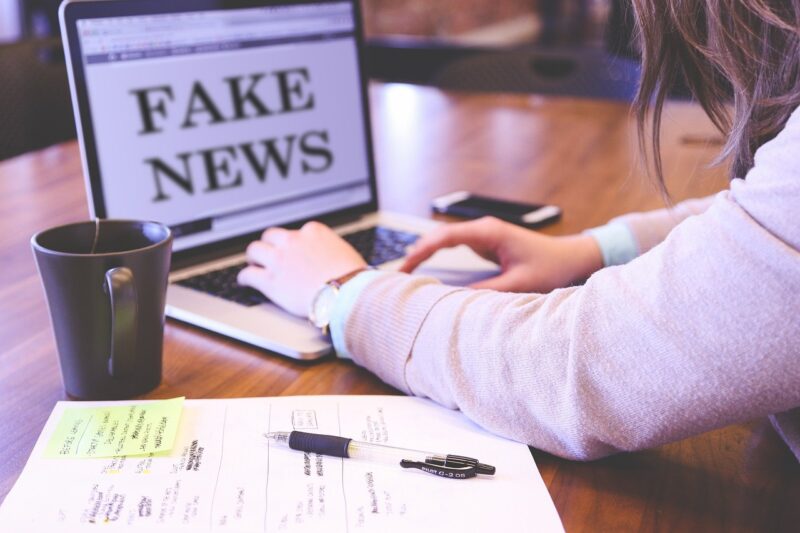How to Spot Fake News and Protect Yourself from Misinformation
November 16, 2024

In the digital age, where information travels faster than ever, distinguishing fact from fiction has become increasingly challenging. Fake news and misinformation can have serious consequences, influencing public opinion and affecting real-world situations. This article aims to equip you with the tools and techniques necessary to identify fake news and protect yourself from misinformation effectively.
1. Understanding Fake News and Misinformation
Fake news refers to false or misleading information presented as news. Misinformation, on the other hand, encompasses any false or incorrect information, regardless of intent. This includes everything from rumors shared on social media to hoaxes causing panic or uncertainty. Understanding these definitions sets the foundation for effectively combating misinformation.
2. Why Fake News Spreads So Easily
There are several reasons why fake news spreads easily:
- Cognitive Bias: People tend to believe information that aligns with their pre-existing beliefs, making misleading articles more persuasive.
- Social Media Algorithms: Social media platforms often prioritize sensational content that drives engagement, regardless of accuracy.
- Emotional Manipulation: Fake news often evokes strong emotions—fear, anger, or excitement—encouraging shares and re-shares among users without fact-checking.
To tackle these challenges, it’s crucial to develop skills to critically evaluate sources of information.
3. Techniques to Spot Fake News
Here are some proven methods to identify fake news articles and sources:
3.1 Check the Source
Reputable news organizations invest in research and fact-checking. Ensure that the article comes from an established outlet with a history of accuracy. When in doubt, look for a source that is well-regarded and recognizes professional journalistic standards.
3.2 Focus on the Headline
Often, headlines of fake news articles are sensationalized to grab attention. If a headline feels exaggerated or evokes a strong emotional response, it’s worth further investigation. Reliable articles usually have straightforward, factual headlines.
3.3 Verify with Other Sources
Cross-check information in the article with other reputable sources. If multiple trustworthy outlets report similar findings, the information is more likely to be accurate. Conversely, if you find only one outlet reporting it, proceed with caution.
3.4 Look for Quotes and Data
Credible news articles often include data, quotes from experts, and references to studies. Check whether the data provided is accurate and whether expert sources are identified. Fake news lacks concrete evidence and often relies on emotional appeal.
3.5 Analyze the URL
Fake news websites may imitate reputable ones by slightly altering the URL. Look for subtle differences, such as additional words or misplaced letters. A legitimate news article will often be hosted on a credible domain such as “.gov,” “.edu,” or established news domains like “bbc.com” or “nytimes.com.”
4. Tools for Fact-Checking
Using fact-checking websites can enhance your ability to spot misinformation. Here are some valuable resources:
- Snopes: A well-known fact-checking site that debunks rumors, urban legends, and misinformation across various topics.
- FactCheck.org: This site monitors the factual accuracy of statements made by political figures and campaigns in the U.S.
- PolitiFact: Focuses primarily on political claims, awarding a truth-o-meter rating to assess factual accuracy.
- Google Fact Check Tools: Google has integrated fact checkers’ tags within its search results, allowing you to see verified sources related to your search queries.
These tools significantly reduce the chances of falling for misinformation by equipping you with reliable information.
5. Engaging Critically with Media
Adopting a skeptical mindset can aid in differentiating between reliable and misleading information. Here are some advice:
- Be Curious: When encountering news, always ask: “How do they know this?” and “Who benefits from this information?” A questioning approach often uncovers biases and agendas behind certain news articles.
- Educate Yourself: Take online courses on media literacy to arm yourself with knowledge about recognizing misinformation tactics.
- Participate in Discussions: Engaging with diverse perspectives can overcome individual biases and broaden understanding around specific issues. Join forums or discussions to exchange ideas with others, promoting more critical assessments of news topics.
6. Conclusion: Taking Individual Responsibility
In today’s information-saturated environment, it’s vital to exercise discernment and take individual responsibility by fostering critical thinking skills. By implementing the techniques mentioned above, you can protect yourself from misinformation and contribute to a more informed society. Remember that every share, retweet, or comment has the power to influence others, so ensure that what you’re sharing is accurate and trustworthy.
As we navigate through endless content online, remain vigilant and proactive about the quality of information you consume and share. Together, we can reduce the impact of fake news and promote a healthier discourse in our digital landscape.








